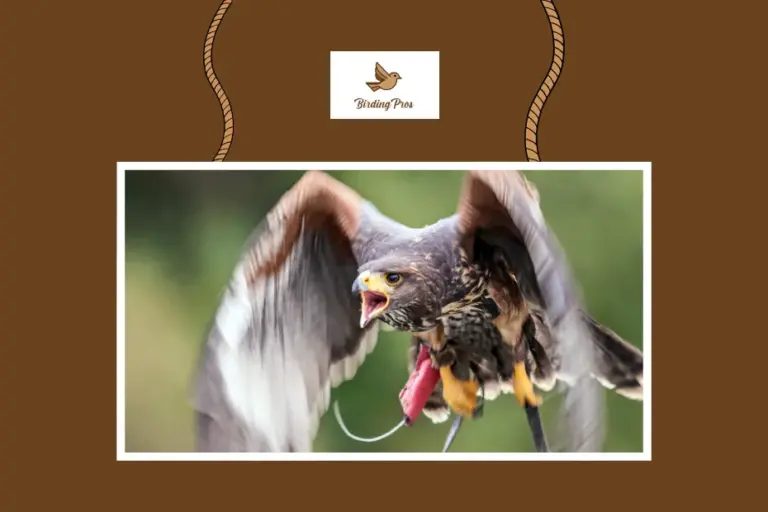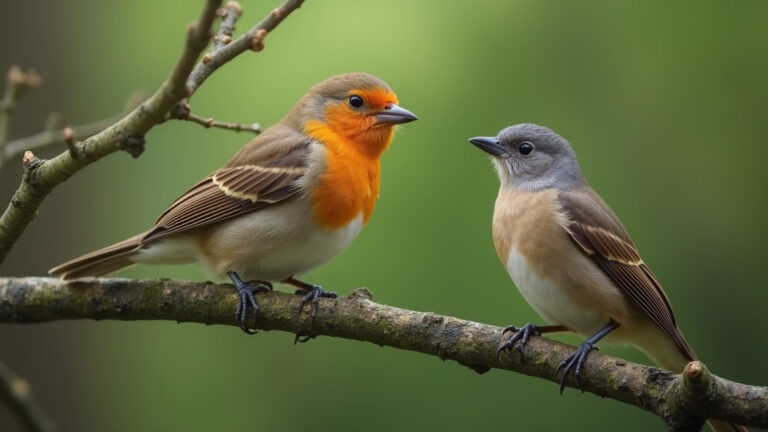Feathers and Fortitude: How Do Birds Survive in the Desert?
Navigating a world where drought and scorching heat dominate daily life, desert birds are faced with the challenge of survival, including enduring intense solar radiation. How these birds manage to thrive in such arid conditions is an intriguing question.
They employ a remarkable array of strategies for cooling down, conserving water, and adapting their diets. We will explore these vital techniques that underscore the incredible adaptive capabilities of birds who call the desert home.
Table of Contents
Key Takeaways
- Desert birds have evolved physiological adaptations like insulation management, heat conduction through bare scaly legs, and blood vessel dilation to maintain body temperature and survive in extreme desert temperatures.
- Efficient water management through internal metabolic water production, highly efficient kidneys, and selective feeding habits enable desert birds to strategically conserve and utilize scarce water resources in their arid habitats.
- Desert birds employ various evaporative cooling mechanisms such as panting, gular fluttering, and urohidrosis to dissipate heat and cope with the high heat conditions of desert environments.
Adaptations for Thermoregulation
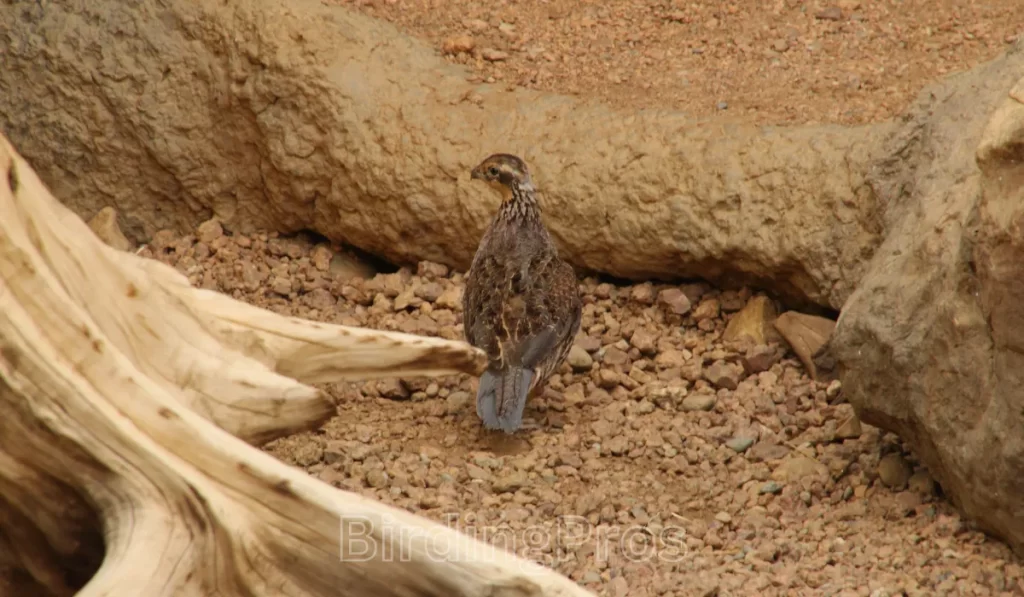
Desert birds exhibit extraordinary physiological adaptations to regulate their body temperature amid intense air temperatures, including coping with extreme air temperatures.
Imagine enduring the fierce desert heat, where air temperature significantly influences how birds and mammals regulate their body temperature in relation to the ambient air temperature, when your baseline body temperature is already higher than that of humans.
You’d assume overheating would be a given, right? These birds not only manage to survive in such harsh conditions, including intense solar radiation, low relative humidity, unpredictable rainfall, meager primary productivity, and extreme air temperatures, but actually thrive. What’s their secret?
One critical adaptation for these birds is insulation management. By altering the insulating capacity of their feathers, they can effectively control body heat and release excess warmth as needed.
Paired with this is an impressive ability to conduct heat away from themselves by expanding blood vessels in the unfeathered skin on their legs—a key survival mechanism in extreme habitats.
Expanded blood flow near the surface of the skin due to dilated blood vessels serves as yet another fascinating adaptive strategy among desert-dwelling birds.
The bird’s nervous system plays an essential role here it signals for vessel walls to relax and widen enhancing dissipation of internal heat into the environment efficiently.
Consequently, even when summer temperatures soar high enough to fry an egg on a rock surface, these adept creatures are able to stay cool and collected.
Insulation and Heat Conduction
To cope with the scorching desert air temperatures, birds employ a clever strategy. They minimize the insulation their feathers normally offer, which assists in expelling excess body heat and helps to regulate their temperature within manageable levels.
This adaptation is crucial for tolerating high body temperature, allowing them to balance energy and water requirements efficiently.
Compared to mammals, birds possess an inherently higher average body temperature that confers them an edge when it comes to dissipating environmental heat.
This higher body temperature enables them to conduct heat to the air until the ambient temperature reaches their body temperature, effectively reducing trans-epidermal water loss by increasing the gradient between body and air temperature.
To these feather adjustments, birds can expand blood vessels within their unfeathered scaly legs. This biological adaptation allows for efficient transfer of warmth into the surroundings – essentially transforming their legs into radiative cooling systems.
Blood Vessel Dilation
In the intense heat of desert environments, birds exhibit a smart physiological adaptation to avoid becoming overheated.
They expand their blood vessels, thereby enhancing blood circulation near the skin surface, which facilitates increased loss of heat. This strategy enables birds to lower their central body temperature through the release of heat from the skin’s surface.
Maintaining control over their body temperature is crucial for birds’ survival in dry regions and this adaptability plays a key role in that effort.
Seeking Shade and Microclimates
Desert birds have developed both physiological and behavioral adaptations to manage the harsh conditions of their habitat. The Cactus Wren, for instance, modifies its search for food according to the time of day, opting for shaded regions when temperatures soar.
Similarly, by nesting in former woodpecker cavities within saguaro cacti, Elf Owls take advantage of a more temperate microclimate offered by these natural formations. These tactics are crucial for desert-dwelling birds to thrive in extreme habitats and enhance their chances of survival.
Efficient Water Management
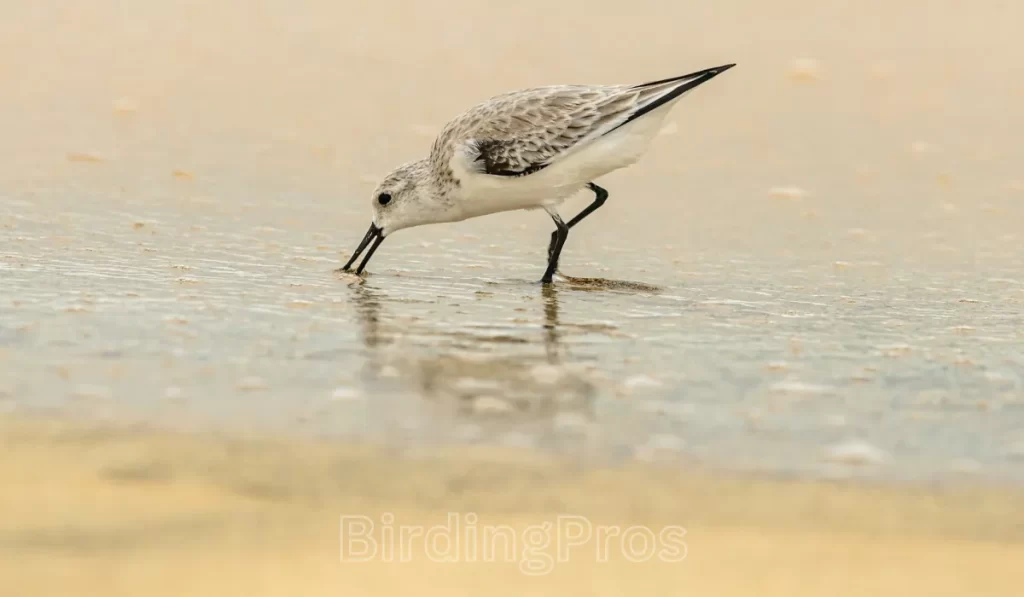
In desert landscapes where water is scarce, birds have evolved impressive mechanisms to handle their hydration needs adeptly.
Their survival strategies in these dry regions include not only the generation of metabolic water internally, but also the possession of highly specialized kidneys that are optimized to retain as much water as possible.
Similarly, desert animals have developed efficient ways to manage hydration, evolving mechanisms to minimize water loss and maximize water intake, much like their avian counterparts in these arid environments.
These avian species are equipped with a natural capacity to synthesize metabolic water inside their bodies. They regulate their hydration by carefully choosing prey that contains higher levels of moisture and judiciously managing fluid loss through:
- excretion
- defecation
- respiration
- skin evaporation
Through such practices, desert-dwelling birds effectively preserve an adequate level of body hydration, enabling them to flourish despite the scarcity of accessible liquid resources.
A crucial element contributing to these birds’ mastery over dehydration is embodied in their exceptionally efficient renal system.
Desert-dwelling bird species boast kidney functions designed for maximum conservation efforts—this organ remarkably manages waste removal while curtailing excessive use of precious water stores within stark arid environments.
This trait demonstrates an enviable degree of Type 4 or more letters content adaptation which humans might wish they could emulate!
Metabolic Water Production
Birds that inhabit the desert, such as the Black-throated Sparrow, possess a remarkable talent for meeting their water requirements by converting metabolic water from their diet.
The song of the black throated sparrow is a testament to these birds’ ability to subsist on dry seeds and extract sufficient moisture, negating reliance on drinking water.
Their specialized adaptation empowers them to thrive in spite of the sparse primary productivity available in their parched surroundings.
Selective Feeding Habits
Desert-dwelling birds have evolved to prioritize energy conservation in their nutritional intake, sustaining reduced basal and field metabolic rates.
During periods of limited food availability, these birds often boost their intake of lipid-rich seeds, which not only provide a longer-lasting water source but also support the production of metabolic water.
Through this discerning foraging behavior, desert birds effectively manage both their energy use and hydration levels amidst arid conditions.
Efficient Kidneys
Desert birds possess highly effective kidneys, designed to eliminate waste while retaining as much water as possible. The Cactus Wren serves as a prime example of this adaptation with its extraordinary kidney efficiency, enabling it to excrete waste while expelling virtually no liquid and thus preserving hydration.
Such an efficient renal system is essential for survival in the arid conditions of the desert where water is scarce, demonstrating how crucial this physiological trait is for these birds’ existence.
Evaporative Cooling Mechanisms
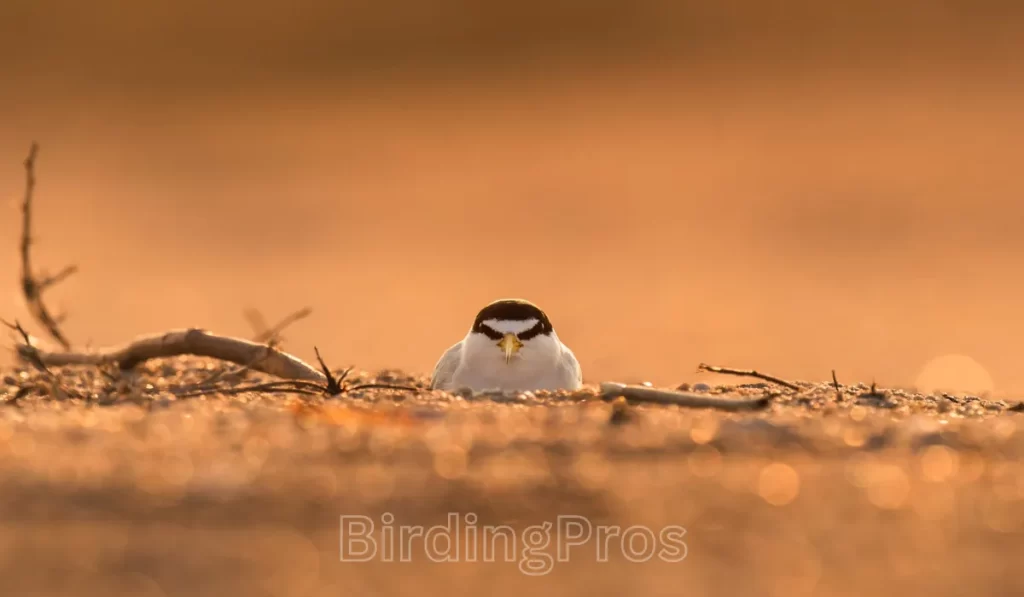
For cooling down, desert birds depend on evaporative cooling mechanisms. These include panting, gular fluttering, and urohidrosis, all of which allow birds to maintain their body temperature even in high heat conditions.
Panting is a common method for evaporative heat dissipation in hot environments. Birds like the Cactus Wren and the Zebra Finch use panting for thermoregulation, modulating their body temperature to survive the desert heat.
Desert birds also use gular fluttering and urohidrosis as additional cooling mechanisms. In gular fluttering, birds flutter the skin in their throats to assist in heat dissipation.
Urohidrosis involves the application of bodily fluids onto their skin or feathers for evaporative cooling. These diverse cooling mechanisms illustrate the intriguing ways birds adapt to the desert heat.
Panting
As the summer temperatures in the desert become scorching, birds like the Cactus Wren rely on panting as a means of evaporative cooling to dissipate heat.
Meanwhile, Zebra finches exhibit a unique behavior known as ‘vocal panting’ during times of thermal stress, which involves emitting high-pitched sounds that may enhance their ability to withstand heat. This showcases how birds that inhabit deserts have adapted to thrive within these torrid environments.
Gular Fluttering
Desert birds have developed an effective cooling technique known as gular fluttering to combat the heat. This method entails rapid movement of throat skin that aids in expelling heat from their bodies.
Birds such as the common poorwill are able to minimize metabolic costs while still losing water through evaporation with this strategy, resulting in only slight rises in body temperature and increasing their capacity to withstand high temperatures.
Despite facing extreme levels of solar radiation, these birds manage to maintain a stable body temperature!
Urohidrosis
In the scorching heat of desert environments, birds have developed a remarkable method for maintaining their body temperature through evaporative cooling.
This behavior, called urohidrosis, involves the bird defecating on its own legs to allow the evaporation process from these fluids—which have been previously metabolized by the bird—to effectively lower its body temperature.
Considering they make use of waste products in such a practical way is truly an ingenious survival strategy!
Desert Bird Diets and Foraging Strategies
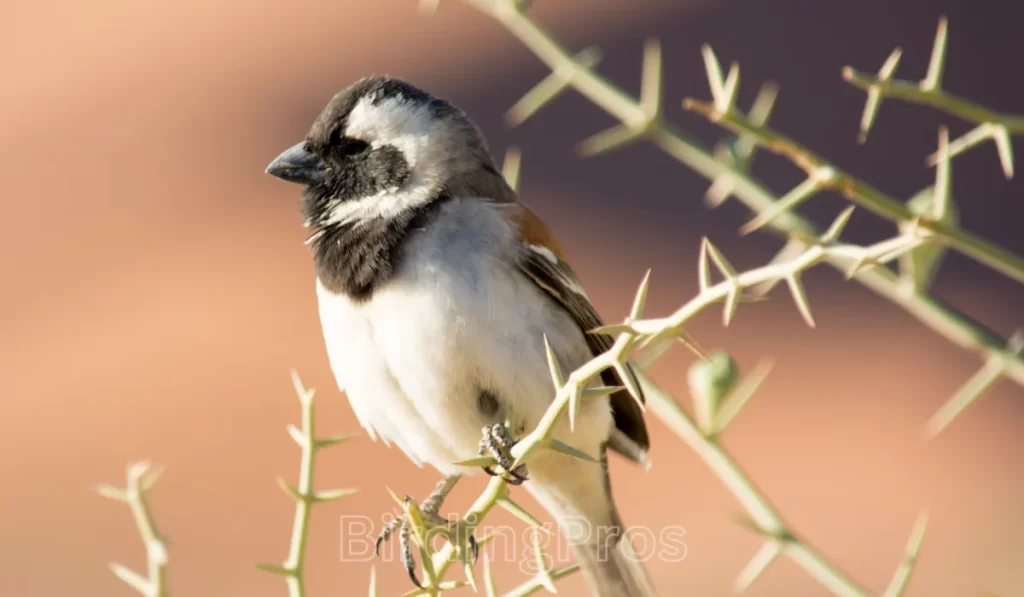
Desert birds, from the Cactus Wren to the Greater Roadrunner, showcase their ability to survive in harsh environments through a diverse array of diets and foraging methods.
Their consumption includes a variety of insects, small reptiles, seeds, and fruits. This diversity is testament to their remarkable adaptability amidst scarce resources.
Many desert-dwelling bird species have developed feeding behaviors that are opportunistic in nature.
Depending on what’s available in their dry surroundings—during times when food is abundant—they may stick with regular eating patterns—but should there be a shortage of usual foods they tend to turn towards lipid-rich seeds which can help generate metabolic water.
The survival of these avian inhabitants heavily depends on specialized physical adaptations like finely tuned beaks designed for effective preying and consumption habits.
Many desert birds rely upon plants as vital sources for nutrients and hydration by consuming nectar, fruit or seeds available within arid landscapes.
Equipped with such distinctive traits tailored for life within extreme conditions found in deserts around the globe, these feathered creatures not just endure but also flourish across various ecological niches carved out within this challenging biome.
Opportunistic Feeding
Birds that inhabit deserts, an intriguing subset of desert wildlife, demonstrate adaptive feeding strategies suited to their parched environments. They adjust what they eat based on the availability of food sources around them while emphasizing energy conservation in their dietary choices.
When there’s an abundance of food, these birds will feed on insects and may also partake in fruits, seeds or even tiny reptiles.
During leaner times, they tend to consume high-lipid seeds, which are better for water retention and assist in the generation of metabolic water.
Through this flexible approach to nutrition, these avian species manage to sustain both their levels of energy expenditure and equilibrium in hydration despite the erratic nature of desert food supplies.
Specialized Beaks and Hunting Techniques
Birds that inhabit deserts have evolved unique beaks and predatory strategies to effectively secure their prey. For example, Harris’s hawks engage in cooperative hunting tactics, banding together to drive prey out of thickets.
Meanwhile, Turkey vultures leverage their highly developed olfactory abilities and keen eyesight to find carrion across the expansive desert landscape where sustenance is often limited. Such specialized predation methods significantly boost these birds’ ability to endure in such extreme habitats.
Utilizing Plant Resources
In the parched landscape of deserts, where water is scarce, vegetation becomes an essential dietary component for birds.
The Black-throated Sparrow, for instance, is able to derive its required hydration from eating seeds, which may alleviate its need to find open sources of water to drink.
Other avian species such as the Phainopepla rely on a diet consisting mainly of mistletoe berries and supplement with insects they capture in flight.
The exploitation of plant resources by these desert-dwelling birds serves not only as a means to obtain sustenance, but also plays a significant role in water conservation—crucial given that water is so rare and valuable in their environment.
Nesting and Reproduction in Extreme Conditions
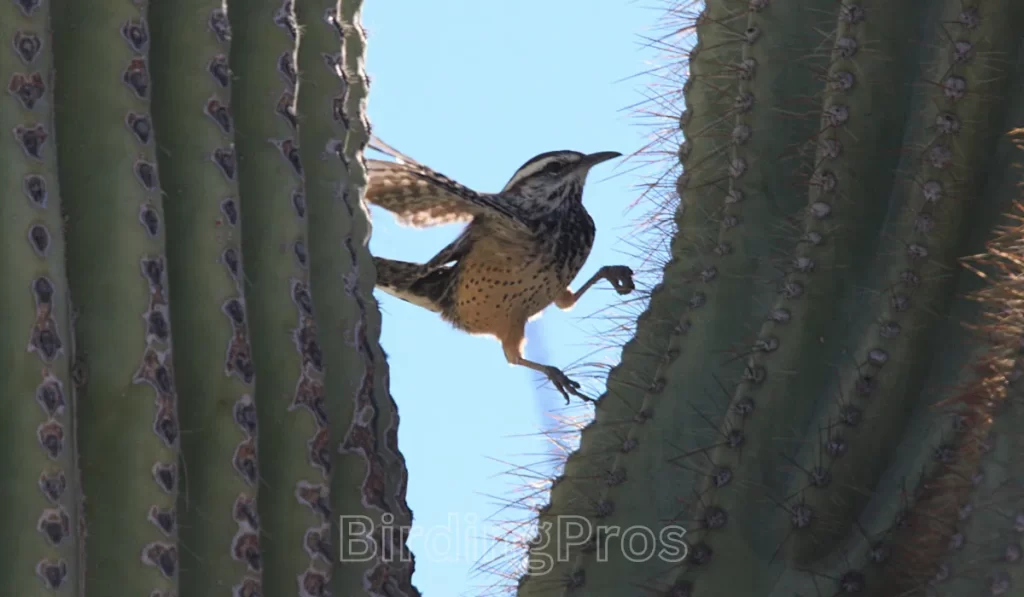
Birds in the desert have cleverly adjusted their breeding and nesting behaviors to flourish despite the formidable conditions.
Strategies including nesting on the ground, timing their reproduction with environmental cues, and collaborative child-rearing all contribute to ensuring that their offspring endure in such a demanding setting.
For example, many birds of desert regions choose to nest directly on terra firma where they can use innate concealment abilities for safeguarding both nests and eggs against predators by merging seamlessly into the landscape.
These birds often engage in synchronized breeding. This adaptation involves aligning reproductive activities closely with periods of rain. Sporadic—to capitalize on better circumstances for nurturing young ones due to scarce moisture levels inherent in their territories.
Cooperative breeding is common among certain species as kin work together aiding each other’s rearing efforts—a clear demonstration of community support aimed at increasing juvenile bird survival rates within this challenging ecosystem.
Ground Nesting and Camouflage
Desert-dwelling, ground-nesting birds like the Gambel’s quail capitalize on their inherent camouflage to shield their nests and eggs from potential predators.
They often choose to construct homes within natural formations such as saguaro cacti that offer not only safety from predators but also protection against extreme heat.
Specifically, the Gambel’s quail displays an extraordinary method of survival. It lays precocial young that hatch fully sighted and blanketed in downy feathers.
These chicks are ready at once to trail behind their parents, significantly reducing the risks usually faced by species that nest on the ground.
Synchronized Breeding and Rainfall Patterns
Birds dwelling in deserts have evolved to align their breeding behavior with the infrequent and erratic rainfall typical of their environment. They exhibit several adaptations, such as:
- Larks adjusting their reproductive timing in concert with rain events for ideal offspring growth
- Utilizing available moisture from rains to enhance reproductive outcomes
- Adapting skillfully to the uncertain environmental circumstances that characterize desert habitats
Thanks to these evolutionary strategies, desert birds flourish amidst harsh desert settings where they are familiarized not only with distinctive auditory landscapes, like those captured by researchers through recorded desert sounds, but also amongst species like dpa desert thunder birds.
Cooperative Breeding and Social Behavior
Certain desert-dwelling avian species adopt social cooperation and collaborative rearing tactics to boost their offspring’s chances of survival.
Take the white-browed sparrow-weavers as an example. They employ collective breeding methods as a means of evolutionarily countering the fluctuations in reproductive success caused by shifting environmental climates.
In times of drought, collectives that include numerous aiding individuals see enhanced chick survival rates—these aides are frequently kin who indirectly foster the dissemination of mutual genetic material.
Such communal strategies not only safeguard the well-being of these birds’ young, but also play a significant role in ensuring the persistence of their species overall.
Desert Bird Species Spotlight
Delving into the resilience of avian species in deserts, we should spotlight specific birds that have adeptly made the harsh desert conditions their home. Noteworthy examples include:
- Cactus Wren: This bird is notorious for its curiosity and vigorous nature.
- Greater Roadrunner: It stands out due to its unique approach to hunting prey.
- Gambel’s Quail: Remarkably, this quail can withstand scorching temperatures with ease.
- Gila Woodpecker: Impressively, this woodpecker has developed a method to procure water from cacti.
These birds are exemplary in demonstrating specialized adaptations which allow them not just survive but also prosper within dry habitats. One key characteristic is their distinctive bird calls.
Cactus Wren
Typically inhabiting the dry, semi-arid deserts throughout the southwestern United States and northern Mexico, the Cactus Wren holds the title of being the biggest wren species in America.
With its noticeable brown feathers and prominent white stripes over its eyes, it exhibits a lively and inquisitive nature that leads to frequent explorations of novel items encountered within their domain.
Characteristics of Cactus Wrens include:
- Building nests that resemble footballs using arid grasses
- Insulating these structures with more delicate materials
- Preferring thorny vegetation like trees or shrubs as nesting sites for protection against predators.
Greater Roadrunner
The Greater Roadrunner, a resident of arid regions, is well-adapted to its severe surroundings. These sizeable birds have developed unique ways to control their body temperature in order to thrive. Their adaptations include:
- Discharging salt via nasal glands
- Adjusting their body heat with the help of dark skin patches
- Soaking up sunlight using sections of their body that act like ‘solar panels’ for warmth absorption.
As opportunistic feeders, roadrunners boast an eclectic diet composed of small mammals, other birds, snakes, lizards, as well as fruits and seeds. This demonstrates their versatile dietary habits across varied food sources.
Elf Owl
The desert serves as a habitat for the Elf Owl, which is among the tiniest species of owls globally.
This diminutive raptor boasts a body length of only 5.75 inches and extends its wings to about 13 inches across, subsisting mainly on a diet consisting of insects and various arthropods.
These elf owls exhibit remarkable endurance, thriving within the harsh environment of the desert. They remain unfazed even when confronted with intense phenomena such as nature essentials sfx thunderstorms despite their petite stature.
Costa’s Hummingbird
The Costa’s Hummingbird, adeptly suited for desert habitats, can withstand severe circumstances by entering a torpor state which diminishes metabolic functions to save energy. This bird remarkably reduces its heart rate and decreases its body temperature to endure the rigorous conditions of the desert.
Human Impact and Conservation Efforts
The persistence of desert birds is not only determined by their capacity for adaptation. The actions of humans, including the destruction of natural habitats and the overuse of resources, have a substantial effect on the populations of these birds.
In particular, bird communities in areas like the Mojave Desert have seen a pronounced reduction in species diversity—a 43 percent average drop within just one century.
Land use changes resulting from urban expansion are leading to loss and fragmentation of habitat, which presents significant obstacles for desert-dwelling birds.
Climate change has been marked by decreased rainfall amounts Aggravating declines in desert avian biodiversity.
Despite such hurdles, initiatives aimed at conservation are being implemented with goals to both mitigate present damages and promote recovery.
Strategies range from planting thousands of cacti to establishing reserves specifically devoted to maintaining avian variety—measures intended to protect these hardy inhabitants that call arid regions home.
Habitat Loss and Fragmentation
Human-induced changes such as habitat loss and fragmentation present substantial obstacles for desert bird species. The survival of these birds is threatened by several disruptive activities, including:
- Agriculture
- Pastoral animal husbandry
- Residential expansion
- Mineral extraction
With the ongoing transformation of their native terrains due to human pursuits, desert birds must either adjust to these evolving conditions or confront grave outcomes.
Climate Change and Its Effects
Another factor caused by human activity that impacts desert bird populations is climate change. A decrease in rainfall, which is a major effect of climate change, contributes to the diminishing diversity of bird species within desert habitats.
Due to their greater size and dependence on animal prey for nourishment, raptors and insect-eating birds are especially susceptible to the physiological strains brought about by climatic stress.
The warming of Earth leads to alterations in desert ecosystems as well, influencing both how these birds survive and where they can live.
Conservation Initiatives and Protected Areas
Efforts to protect desert bird species are underway, tackling the threats posed by habitat destruction and climate change.
To bolster these populations, there has been a significant initiative that involves planting thousands of cacti—a move designed to provide much-needed support for these avian communities.
It is alarming that less than one fifth of refuges—places which serve as sanctuaries from the impacts of climate change and preserve bird diversity—are located in protected zones. This stark statistic underscores an urgent call for expanded conservation measures to secure these critical habitats.
Frequently Asked Questions
How do desert birds regulate their body temperature in extreme heat?
Birds residing in desert regions maintain their body temperature amidst extreme heat by adjusting the insulation properties of their feathers, transferring heat out through their legs, and expanding blood vessels to aid in dispersing excess warmth.
Such adaptations are crucial for these birds to endure the severe conditions of their arid surroundings.
How do desert birds manage water efficiently in arid environments?
Birds that inhabit desert regions are adept at conserving water, thanks to their ability to generate metabolic water internally. They strategically choose prey with high moisture content and possess kidneys that are exceptionally effective at reducing water waste.
These physiological adaptations enable these birds to flourish in the demanding conditions of their arid surroundings.
What are some evaporative cooling mechanisms used by desert birds?
In the extreme heat of deserts, birds employ mechanisms such as panting, gular fluttering, and urohidrosis for evaporative cooling to maintain their body temperature.
How do desert birds adapt their feeding habits in arid environments?
Desert birds, residing in dry landscapes, modify their dietary patterns by embracing opportunistic tendencies. They focus on conserving energy through their food choices and alter what they eat depending on resource availability.
These adaptations enable them to turn to lipid-rich seeds during periods when sustenance is limited.
How do human activities and climate change affect desert bird populations?
The actions of humans, including the destruction of habitats and the exploitation of resources, adversely affect populations of birds in desert regions. Climate change plays a role in this decline through its contribution to decreased levels of precipitation, which reduces the diversity among bird species within these arid ecosystems.
Collectively, these elements present substantial challenges to the survival and health of avian communities that inhabit deserts.
Conclusion
As we conclude this journey through the dazzling world of desert birds, it is clear that these creatures are the epitome of resilience and adaptation.
From physiological adaptations for thermoregulation and efficient water management to intricate foraging strategies and unique nesting patterns, desert birds have evolved in remarkable ways to survive in extreme habitats.
Human activities and climate change present new challenges, but through conservation efforts, we can help ensure the survival of these remarkable creatures. Let’s celebrate and protect these feathered phenoms of the desert, for their survival is testament to the tenacity of life itself.
Stay With BirdingPros for more birding tips.
Reference:
https://new.nsf.gov/news/collapse-desert-bird-populations-likely-due-heat


